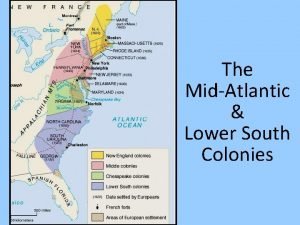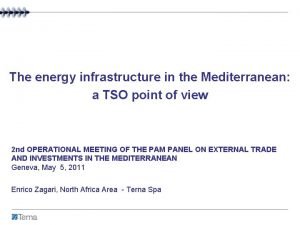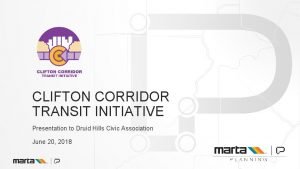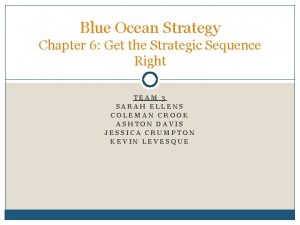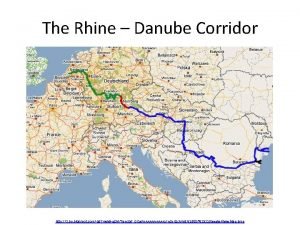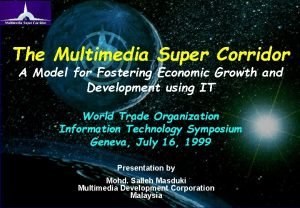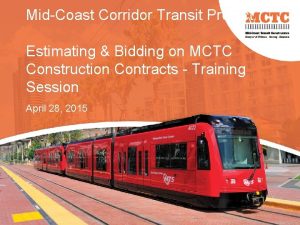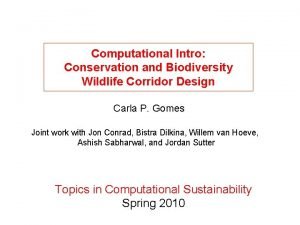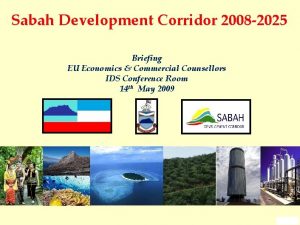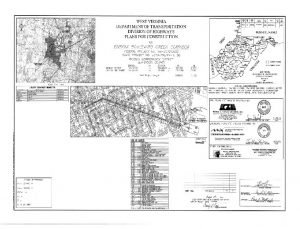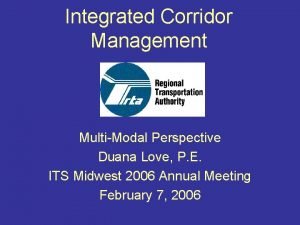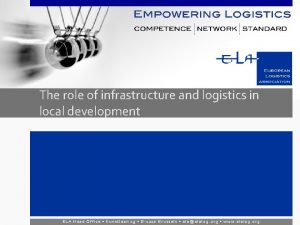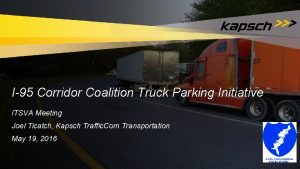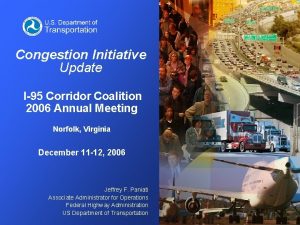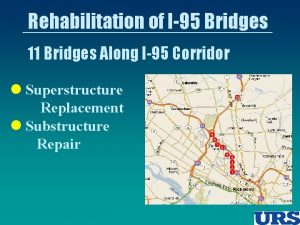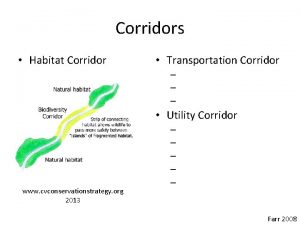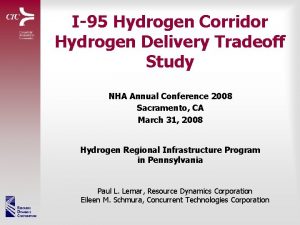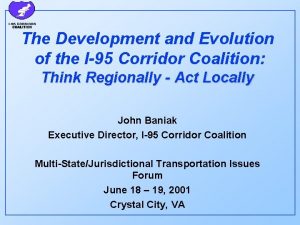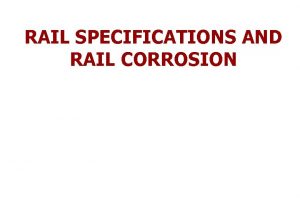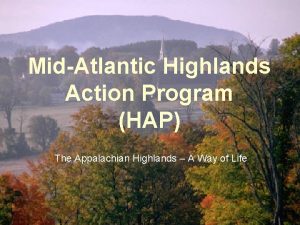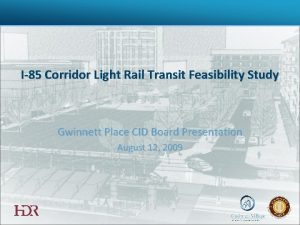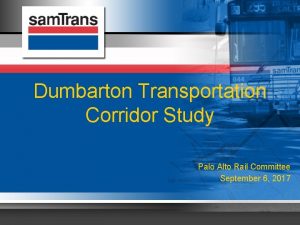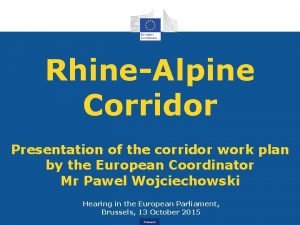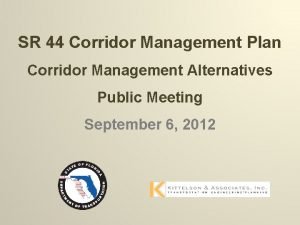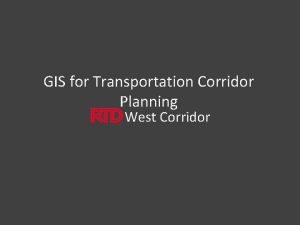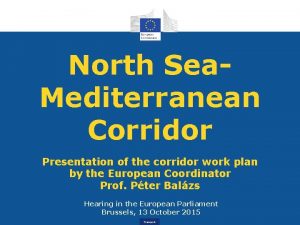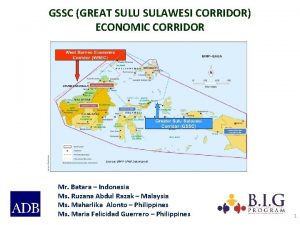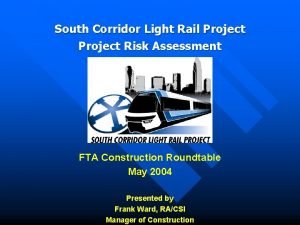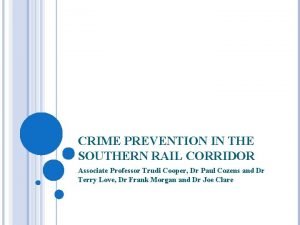I95 Corridor Coalition MidAtlantic Rail Operations Study An



















- Slides: 19

I-95 Corridor Coalition Mid-Atlantic Rail Operations Study — An Integrated Strategy to Eliminate Choke Points Summary Report I-95 Corridor Coalition December 14, 2001

Study Participants and Scope n Participants • Five states (Virginia, Maryland, Delaware, Pennsylvania, and New Jersey), • Three railroads (Amtrak, Norfolk Southern, CSX), and • I-95 Coalition n Scope • Examined the performance of region’s transportation system • Formulated a consensus program of rail investments, and • Recommended a public private/partnership to implement the program I-95 Corridor Coalition December 14, 2001

Mid-Atlantic Rail Network Major Links and Ownership I-95 Corridor Coalition December 14, 2001

The Situation n The Mid-Atlantic is a strategic transportation corridor of national significance • It serves 47 million people in the nation’s largest producing and consuming region; links the nation’s political and financial capitals; and provides access to international seaports and trade routes n Transportation system performance in the Mid-Atlantic corridor is deteriorating, and travel demand continues to grow • I-95 is the nation’s longest, high-volume segment for autos and trucks; I-81 has truck percentages of 20 -30 percent; many highway segments in the region are already at unacceptable levels of service n Deteriorating transportation performance has significant public and private costs for the region and the nation I-95 Corridor Coalition December 14, 2001

Corridor Highway Volumes Source: FHWA Freight Analysis Framework I-95 Corridor Coalition December 14, 2001

Corridor Truck Volumes Source: FHWA Freight Analysis Framework I-95 Corridor Coalition December 14, 2001

Network Segments Over 10, 000 Daily Trucks I-95 Through the Mid-Atlantic Is Among the Most Heavily Traveled Truck Routes in the Nation I-95 Corridor Coalition December 14, 2001

Rail Choke Points n Rail could make a larger contribution to meeting the region’s transportation needs, but the system is constrained by critical “choke points”– physical points that have reduced capacity compared to rest of system, and information deficiencies that constrain effective utilization of system as a whole Shellpot Bridge, Delaware Howard St. Tunnel, Baltimore I-95 Corridor Coalition December 14, 2001

The Program n Infrastructure and information technology improvements, covering the passenger and rail systems in the five states and the District of Columbia – • • n Bridges and tunnels Capacity, connections, and clearances Stations, terminals, and grade crossings Information systems $6. 2 billion in improvements – • $2. 4 billion near-term program (within 5 years) • $1. 9 billion medium-term program (5 to 10 years) • $1. 9 billion long-term program (10 to 20 years) I-95 Corridor Coalition December 14, 2001

Near-Term Program $2. 4 Billion, Within 5 Years I-95 Corridor Coalition December 14, 2001

Near-Term Program (continued) $2. 4 Billion, Within 5 Years I-95 Corridor Coalition December 14, 2001

The Benefits n Public benefits of improving the passenger-rail system – • Increased capacity for current passenger traffic (13 million annual Amtrak riders and 100 million annual commuter rail riders) and future growth • Reduced burden on highways and aviation; increased safety, reliability, emergency response, and redundancy n Public benefits of improving the freight-rail system – • Increased capacity for current freight traffic and growth, keeping it off congested highways; potential to attract an increased share of future long-haul traffic • Improved ports access, military mobilization, economic development, safety, reliability, and emergency response n Public benefits accrue to the region and to the nation as a whole I-95 Corridor Coalition December 14, 2001

The Partnership n A public/private partnership is needed to fund the program and achieve these benefits n Partnership goals – • Bridge the gap between near-term capital needs and longterm revenues • Facilitate direct public investments in rail projects with public benefits, and • Combine and leverage public and private resources I-95 Corridor Coalition December 14, 2001

Conclusions n Performance of all transportation system modes in the Mid-Atlantic region must be improved n Rail can play a bigger role in addressing the Mid-Atlantic region’s transportation needs n Critical choke points can be eased and rail can serve more passengers and freight n Two futures – • Ease rail choke points and make a greater contribution to the efficiency, capacity, and safety of entire system, or • Ignore pressing rail needs and increase the congestion burden on other transportation modes I-95 Corridor Coalition December 14, 2001

Recommendation 1 n The project steering committee of railroads and states, working through the Coalition, should continue their dialog to – • Further refine the program elements • Secure federal participation on the project steering committee • Establish the appropriate funding mechanisms for the choke-point elimination program • Develop a continuing process to inform and guide the planning, delivery, and utilization of these improvements, and • Include shippers, other carriers, receivers, and other stakeholders in the process I-95 Corridor Coalition December 14, 2001

Recommendation 2 n The project steering committee should obtain federal support for planning, design, and implementation of: • "Quick start" projects identified in the Near-Term Program, and • Longer-range capital projects, including - Howard Street Tunnel, - Union Tunnels, - B&P Tunnel, L - 'Enfant Plaza Station, and - New Potomac River rail bridge I-95 Corridor Coalition December 14, 2001

Recommendation 3 n The project steering committee, in cooperation with the Coalition, should initiate – • Feasibility study and pilot program for a corridor-wide, regional-rail advanced traffic information system • Feasibility study of applying state-of-the-art train-control and related systems that will improve rail system management and productivity, and • Development of a rail-network simulation model to quantify the benefits of program improvements I-95 Corridor Coalition December 14, 2001

Recommendation 4 n The Coalition should work with its members and other interested organizations to undertake a comparable assessment of rail issues and needs in New York State (especially East of the Hudson) and New England I-95 Corridor Coalition December 14, 2001

Summary n The Mid-Atlantic rail system is constrained by significant choke points that must be eased to meet the increasing demand for passenger and freight movement. n A program of infrastructure and information improvements in the five states and D. C. , costing an estimated $6 billion over 20 years, is needed. Neither the railroads nor the states can fund the improvements entirely on their own. n The program will benefit the public by relieving pressure on overburdened highways and supporting social, economic, and quality-of-life goals. It is in the public interest for government and the railroads to implement the program through public/private partnerships. n A comparable assessment of rail needs in New York State (especially East of the Hudson) and New England should be done. I-95 Corridor Coalition December 14, 2001
 I 95 corridor coalition
I 95 corridor coalition Midatlantic colonies
Midatlantic colonies Tso energy corridor
Tso energy corridor Means of egress definition
Means of egress definition Virar alibaug corridor map
Virar alibaug corridor map Clifton corridor
Clifton corridor A blue ocean strategy idea threatens the
A blue ocean strategy idea threatens the Rhine-main-danube canal
Rhine-main-danube canal Multimedia super corridor
Multimedia super corridor Mctc san diego
Mctc san diego Wildlife corridor design
Wildlife corridor design Defence corridor jalaun
Defence corridor jalaun Sabah development corridor
Sabah development corridor Polish corridor
Polish corridor Green corridor project
Green corridor project I-10 corridor
I-10 corridor Corridor management
Corridor management Door opening force
Door opening force Trans kalahari corridor secretariat
Trans kalahari corridor secretariat Orient east med corridor
Orient east med corridor

